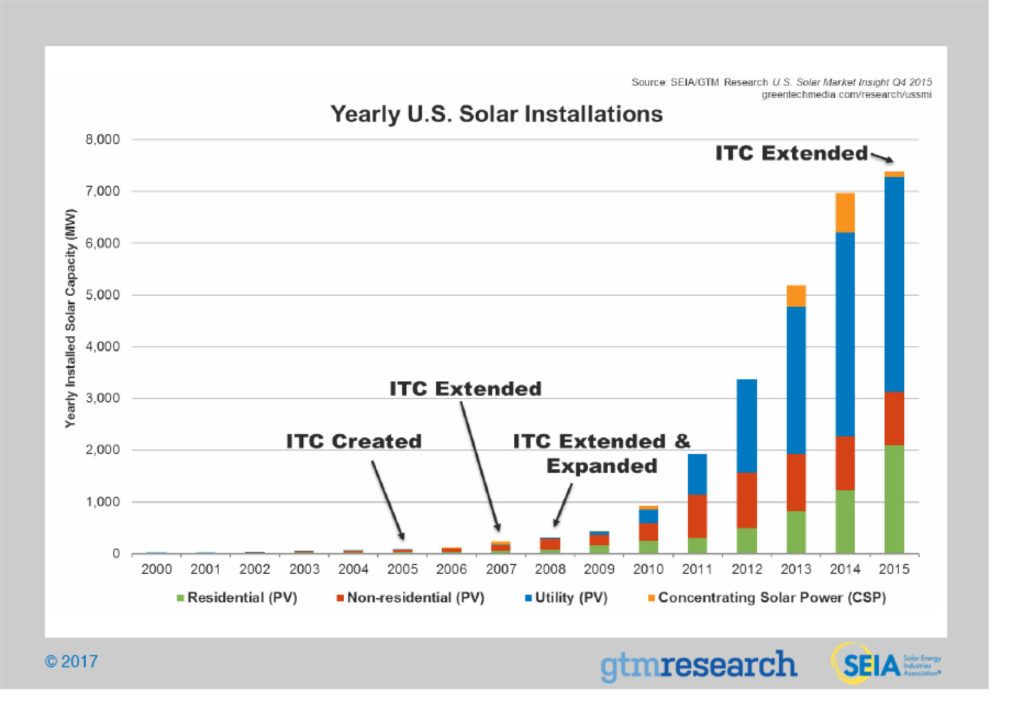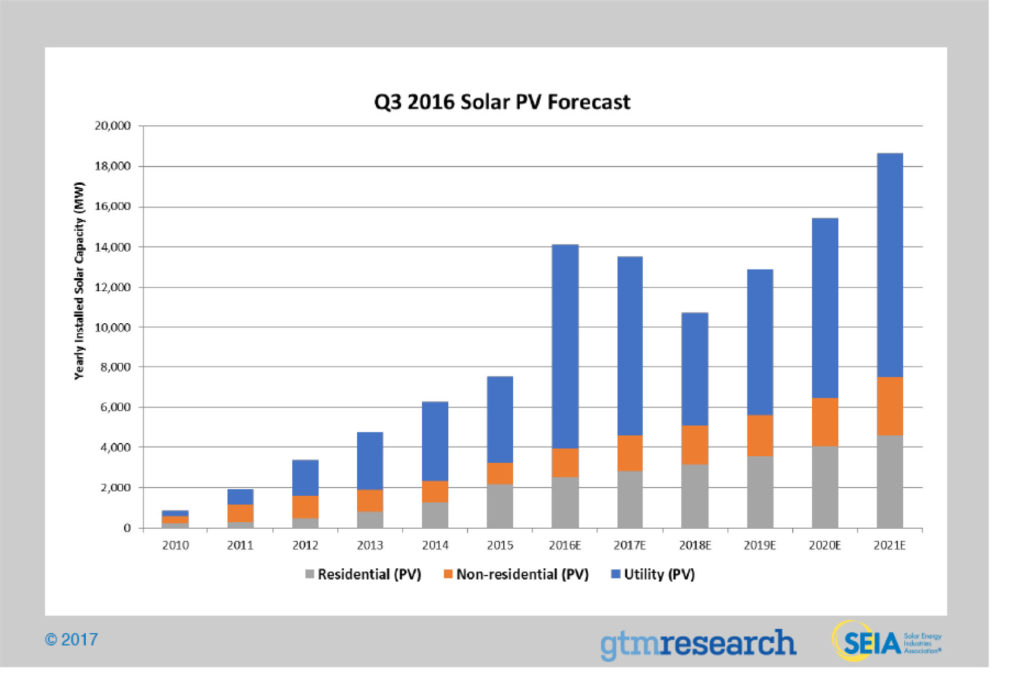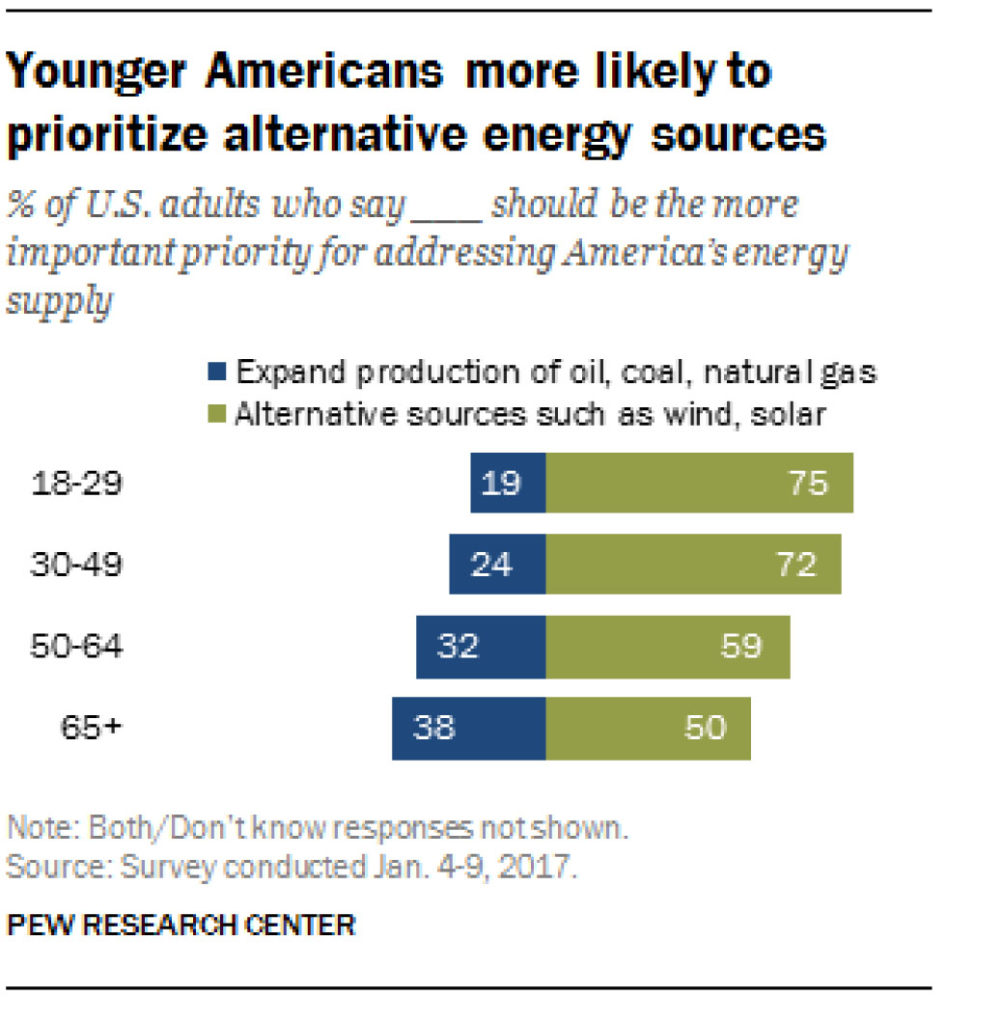Webster’s defines revolution as “a sudden, radical or complete change.” The ongoing revolution in the United States electric utility industry fits that definition to a T. The changes have been unbelievably quick (at least by company standards, if not by activists’ desires), and the long-term impacts are going to be both radical and complete. Importantly, particularly in today’s political climate, I would add that the transition is unstoppable—like the inexorable forward advance of a glacier.
What got me thinking about this were two short news releases from the National Electrical Manufacturers Association earlier this week regarding shipments of LEDs during the third quarter of 2016 (the latest data it has available). In one, NEMA said that shipments of A-type LEDs (the most commonly used bulb for residential applications) topped 30 percent of the total for the first time, continuing a surge that has seen its market share climb from essentially zero just two years ago.
In the second, NEMA pointed out that it had added so-called T-LEDs to its statistics tracking shipments of the linear fluorescent tubes (marketed largely as T5, T8 and T12, which denote their diameter in eighths of an inch) that dominate the commercial and big box retail markets. In the third quarter, NEMA said, T-LEDs accounted from 12.8 percent of all shipments in this category—almost double the 1st quarter results, the first time NEMA even included the segment in its quarterly report. As with the A-line LEDs, sales of T-LEDs were essentially nonexistent in 2014.
The success of the T-LEDs is particularly notable given the relative efficiency and low cost of the existing fluorescent competition, and it has huge ramifications for the lighting industry and electricity demand going forward. In its most recent overview of the LED market, Energy Savings Forecast of Solid-State Lighting in General Illumination Applications (which I wrote about here; the full report can be found here), DOE noted that even though linear lighting totaled just 16 percent of the total number of installed lights in 2015 it accounted for 34 percent of all energy consumed in the sector that year due to the broad use of brighter bulbs and longer daily operation. Clearly, the LED takeover that has just begun will cut electricity consumption significantly—perhaps trimming source energy demand for commercial lighting by as much as 1,670 trillion British thermal units annually by 2025—while also providing better quality and longer-lasting lighting.
And lighting is far from the only example of this advancing efficient, renewable glacier.
Six years ago, I did a lengthy piece for the Edison Electric Institute’s Electric Perspectives magazine on the status of windpower, and a couple of the quotes from that article are noteworthy today given the changes since. (For some history, you can find the article here.)
Public Service Company of Colorado, a subsidiary of Minneapolis-based Xcel Energy, has long been one of the leaders in the windpower transition, and in 2010 it was promoting the fact that for the previous 12 months it had met more than 10 percent of its electricity needs using wind; in addition, it was meeting upward of 30 percent of its demand during the overnight periods using wind.
“If you had asked me in 2007 if this was possible,” Tom Imbler, vice president of commercial operations for Xcel Energy, told me then, “I would have said, no, you can’t do that.”
Today, Xcel, which operates in eight states overall and serves some 3.5 million customers, gets almost 17 percent of its electricity from wind, and has a goal of 24 percent by 2020.
Similarly, Jesse Langston, vice president of utility commercial resources at Oklahoma Gas & Electric, the utility unit of Oklahoma City-based OGE Energy, told me: “Five years ago, we were scared of 2-percent wind.” Now, he continued, the company had a proposal pending before the Oklahoma Corporation Commission to boost the amount of wind on the company’s system to roughly 10 percent.
Today, Oklahoma has 5,453 megawatts of installed windpower generation, accounting for more than 23 percent of the electricity generated in-state for the 12 months ended July 2016 (statistics are drawn from AWEA’s state fact sheets, they can be found here). And more is on the way; an additional 1,194 MW is under construction and another 299 MW are in the advanced development stage. Clearly, 2-percent is no longer a problem.
And Oklahoma is far from the only state turning to windpower in a big way. According to AWEA data, wind now accounts for more than 10 percent of the electricity generated annually in 12 states, topped by Iowa, where the 6,356 MW of installed capacity generate more than a third of the state’s electric output. An additional two states are likely to join the 10 percent club when current construction projects are completed. Interestingly, California is not on the list of 10 percent states because of its size, even though it has 5,662 MW of installed wind capacity (putting it third in the U.S.).
Looking ahead, a recent report from DOE’s National Renewable Energy Laboratory concluded that “effective power system operation can be achieved with wind penetrations above 35 percent.” Additional transmission capacity would be needed to reach those totals, the report added, but “our analysis identifies no reliability issues in any of the high-wind scenarios.” The report, Reducing Wind Curtailment through Transmission Expansion in a Wind Vision Future, can be found here.
On top of this, there is the nation’s offshore wind potential, which is where NEMA’s T-LEDs were two years ago—still not even on the charts. But that is likely to change, and soon.
The nation’s first offshore wind farm just entered commercial service in December. But there are clear signs that momentum is beginning to speed up: Deepwater Wind, the developer of the 30 MW facility off the coast of Block Island, Rhode Island, already has begun work on a second, larger project. The company announced the signing this week of a power purchase agreement with the Long Island Power Authority for a 90 MW project to be built 30 miles southeast of Montauk, at the eastern end of the island. And other companies are getting involved as well, notably DONG Energy, the Danish offshore wind giant (it has built more than 25 percent of the world’s offshore wind turbines), whose U.S. unit has teamed up with Boston-based Eversource Energy on an offshore project that ultimately could add 2,000 MW of capacity to the New England power grid.
While admittedly off to a slow start, there is plenty of potential offshore. A DOE study (the full details are here) released last fall estimated the U.S. offshore wind technical resource potential at more than 2,000 GW of capacity, or 7,200 terrawatt-hours of generation per year. As DOE noted, that is almost double the nation’s current annual electricity consumption.
Solar is another example of the unrelenting progress of the ongoing transition. From nothing in 2008 (see chart below), the industry has taken off, with 35.8 gigawatts up and operating today—that is a fast-moving glacier. And forecasts from the Solar Energy Industries Association and GTM Research see little slowdown in the coming five years, with almost 70 GW of new capacity expected to come online by 2021 (see chart below).
A key factor behind the surge in solar (and, to a lesser extent, wind) has been the sharp decline in costs in the past six years. A much-touted goal set by DOE through its SunShot initiative in 2011 was to lower the cost of utility-scale fixed-tilt PV systems to $1.00 per watt (dc) by 2020; according to research released this week by Greentech Media, that price is expected to average $0.99 per watt during the first half of 2017. Looking further out, Greentech’s analysts expect additional price reductions. Translation: solar clearly will play a continuing role in the ongoing transition.
Finally, there is the issue of public opinion. Here, as above, while clean energy may have been dismissed in the past as a fringe issue, long-term trends strongly favor the current green glacier. Polling data released this month by Pew Research found that 65 percent of Americans favor alternative sources such as wind and solar over fossil fuels. Not surprisingly, Democrats are much more favorably disposed toward green energy, with 81 percent saying the nation should be focused on alternative sources instead of fossil fuels, compared to just 45 percent of Republicans.
But the kicker is the age breakdown. Some 73 percent of Americans under 50 say alternative energy sources should be the nation’s priority (see chart below), and younger Americans are now the driving force in U.S. demographics. Baby Boomers, the generation born from 1946-1964, long ruled the trends and drove the decision-making, but Millenials, those born roughly from 1980-2000 (demographers are still debating the exact beginning and end points), now outnumber the Boomers. According to the U.S. Census Bureau there were 83 million Millenials in 2014, compared to just 75 million Boomers.
So the revolution moves forward, inexorably.
–Dennis Wamsted



 Follow
Follow
All this is wonderful and accurate. 2016 solar number of ~14GW only confirms what is in this excellent article.